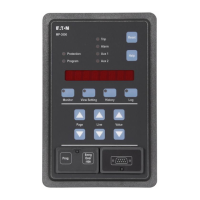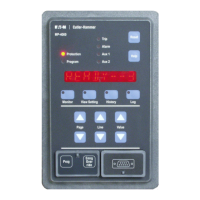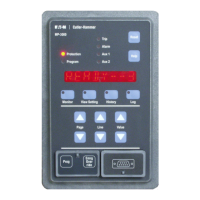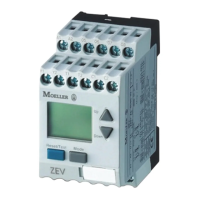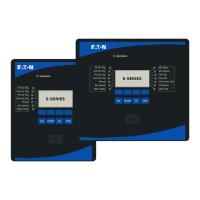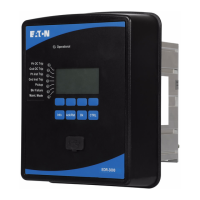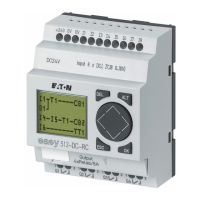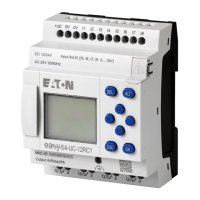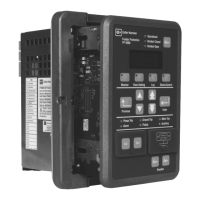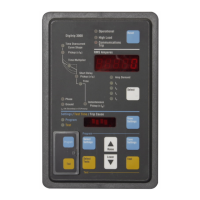29
Instruction Booklet IB02402001E
December 2010
Instructions for the Eaton Type
MPCV Network Protection Relay
EATON CORPORATION www.eaton.com
IB02402001E For more information visit: www.EatonElectrical.com
Instruction Bulletin
Effective: September 2004 Page 29
Instruction for the
Cutler-Hammer Type MPCV
Network Protection Relay
Figure 16. Reverse Trip — Sensitive Curve
Gull-wing Trip
The new trip characteristic referred to
as the “Gull-wing” watt trip is repre-
sented by a broken line with a 5
degree slope towards the 90 degree
line, while the solid line represents the
traditional watt trip characteristic of
Network Protector Relays, including
earlier versions of the MPCV Relay.
The “Gull-wing” watt trip widens the
trip region by additional 10 degrees to
compensate for CT phase angle error
during fault conditions and high trans-
former X to R ratios, allowing the relay
to trip whenever the positive-sequence
component of the current leads the
positive-sequence line-to-ground volt-
age by more than 85 degrees. In com-
parison, the traditional watt trip
characteristic would allow closure only
if this angle is more than 95 degrees.
With this additional trip region, the
relay will dependably detect the simul-
taneous fault and blown fuse condi-
tions that would not be detected by the
traditional watt trip.
Note that the MPCV-GE provides a
similar functionality, but the slope of
it's expanded tilt region is 0 degrees
parallel to the 90 degree line due to the
nature of the GE tertiary current trans-
former.
A – “Gull-wing” trip line for Cutler-
Hammer style relay
firmware version V1.014 and for GE
style relay firmware
version V1.015.
0
270
90
180
A

